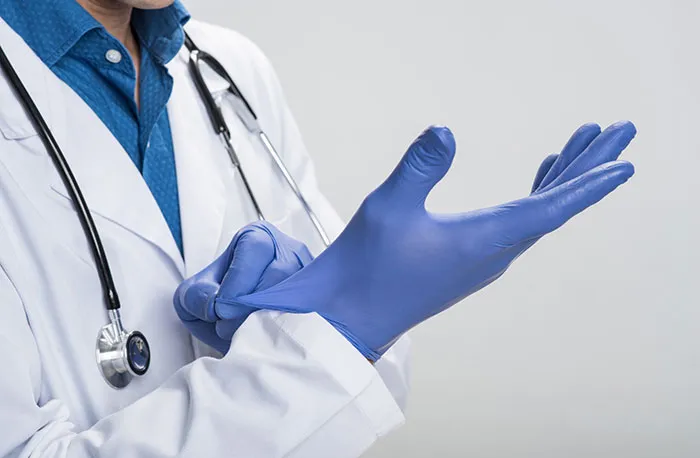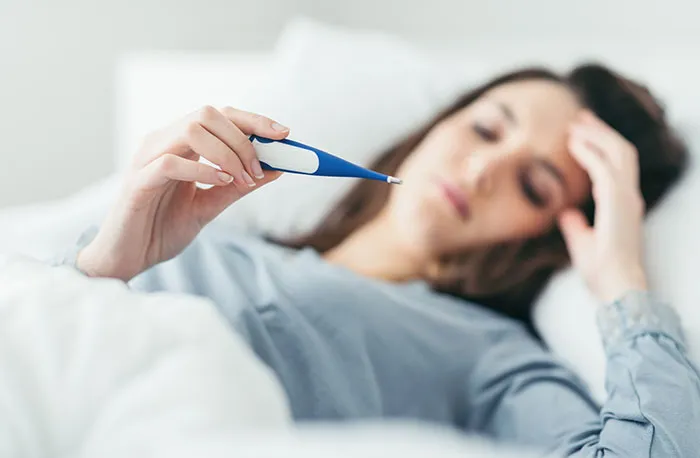
eBook - ePub
Coronavirus
A Guide to Understanding the Virus and What is Known So Far
The Centers for Disease Control's Website
This is a test
Buch teilen
- 780 Seiten
- English
- ePUB (handyfreundlich)
- Über iOS und Android verfügbar
eBook - ePub
Coronavirus
A Guide to Understanding the Virus and What is Known So Far
The Centers for Disease Control's Website
Angaben zum Buch
Buchvorschau
Inhaltsverzeichnis
Quellenangaben
Über dieses Buch
The novel coronavirus that causes COVID-19 is now officially a global pandemic with over 130, 000 confirmed cases and over 5, 000 deaths. Its path is exponential, and panic is being felt around the globe. But the most important thing you can do to combat the virus is to understand how it works, how it spreads, and to STAY INFORMED. What Does This Coronavirus Outbreak Guide Contain?
- In-depth history of the virus since its inception
- Scientific explanation of what coronavirus is and how it works
- Actionable advice on how to stop the novel coronavirus from spreading
- Specific tips for employers, employers, and those who must travel during the outbreak
- Updated statistics on symptoms, treatment, and global survival rates.
This 2019-2020 Coronavirus Outbreak Guide is from the CDC Website. Learn the truth about how this virus works. And whatever you do, don't forget to wash your hands.
Häufig gestellte Fragen
Wie kann ich mein Abo kündigen?
Gehe einfach zum Kontobereich in den Einstellungen und klicke auf „Abo kündigen“ – ganz einfach. Nachdem du gekündigt hast, bleibt deine Mitgliedschaft für den verbleibenden Abozeitraum, den du bereits bezahlt hast, aktiv. Mehr Informationen hier.
(Wie) Kann ich Bücher herunterladen?
Derzeit stehen all unsere auf Mobilgeräte reagierenden ePub-Bücher zum Download über die App zur Verfügung. Die meisten unserer PDFs stehen ebenfalls zum Download bereit; wir arbeiten daran, auch die übrigen PDFs zum Download anzubieten, bei denen dies aktuell noch nicht möglich ist. Weitere Informationen hier.
Welcher Unterschied besteht bei den Preisen zwischen den Aboplänen?
Mit beiden Aboplänen erhältst du vollen Zugang zur Bibliothek und allen Funktionen von Perlego. Die einzigen Unterschiede bestehen im Preis und dem Abozeitraum: Mit dem Jahresabo sparst du auf 12 Monate gerechnet im Vergleich zum Monatsabo rund 30 %.
Was ist Perlego?
Wir sind ein Online-Abodienst für Lehrbücher, bei dem du für weniger als den Preis eines einzelnen Buches pro Monat Zugang zu einer ganzen Online-Bibliothek erhältst. Mit über 1 Million Büchern zu über 1.000 verschiedenen Themen haben wir bestimmt alles, was du brauchst! Weitere Informationen hier.
Unterstützt Perlego Text-zu-Sprache?
Achte auf das Symbol zum Vorlesen in deinem nächsten Buch, um zu sehen, ob du es dir auch anhören kannst. Bei diesem Tool wird dir Text laut vorgelesen, wobei der Text beim Vorlesen auch grafisch hervorgehoben wird. Du kannst das Vorlesen jederzeit anhalten, beschleunigen und verlangsamen. Weitere Informationen hier.
Ist Coronavirus als Online-PDF/ePub verfügbar?
Ja, du hast Zugang zu Coronavirus von The Centers for Disease Control's Website im PDF- und/oder ePub-Format sowie zu anderen beliebten Büchern aus Medicina & Malattie infettive. Aus unserem Katalog stehen dir über 1 Million Bücher zur Verfügung.
Information
Thema
MedicinaThema
Malattie infettiveInformation for Healthcare Professionals
Current Interim Guidance
• Interim Guidance for Public Health Personnel Evaluating Persons Under Investigation (PUIs) and Asymptomatic Close Contacts of Confirmed Cases at Their Home or Non-Home Residential Settings
• Interim Guidance for Collection and Submission of Postmortem Specimens from Deceased Persons Under Investigation (PUI) for COVID-19, February 2020
• Evaluating and Reporting Persons Under Investigation (PUI)
• Healthcare Infection Control Guidance
• Clinical Care Guidance
• Home Care Guidance
• Guidance for EMS
• Healthcare Personnel with Potential Exposure Guidance
• Inpatient Obstetric Healthcare Guidance
Resources for Healthcare Professionals Caring for COVID-19 Patients
• What Healthcare Providers Should Know
• Frequently Asked Questions for Healthcare Providers
Persons Under Investigation (PUI)

• Interim Guidance for Public Health Personnel Evaluating Persons Under Investigation (PUIs) and Asymptomatic Close Contacts of Confirmed Cases at Their Home or Non-Home Residential Settings
• Evaluating and Reporting PUI Guidance
• Reporting a PUI or Laboratory-Confirmed Case for COVID-19
Clinical Care

• Clinical Care Guidance
• Disposition of Hospitalized Patients with COVID-2019
• Inpatient Obstetric Healthcare Guidance
Infection Control

• Guidance and Resources on Infection Control
Supply of Personal Protective Equipment

• Guidance and Resources on Healthcare Supply of Personal Protective Equipment
Home Care
• Implementing Home Care of People Not Requiring Hospitalization
• Preventing COVID-19 from Spreading in Homes and Communities Disposition of Non-Hospitalized Patients with COVID-19
Webinar for Healthcare Professionals

Strategies for Healthcare Systems Preparedness and Optimizing N95 Supplies.
Find more information on supplies of personal protective equipment
View presentation slides
Evaluating and Testing Persons for Coronavirus Disease 2019 (COVID-19)
Summary of Recent Changes
Revisions were made on March 9, 2020, to reflect the following:
• Reorganized the Criteria to Guide Evaluation and Laboratory Testing for COVID-19 section
Revisions were made on March 4, 2020, to reflect the following:
• Criteria for evaluation of persons for testing for COVID-19 were expanded to include a wider group of symptomatic patients.
Limited information is available to characterize the spectrum of clinical illness associated with coronavirus disease 2019 (COVID-19). No vaccine or specific treatment for COVID-19 is available; care is supportive.
The CDC clinical criteria for considering testing for COVID-19 have been developed based on what is known about COVID-19 and are subject to change as additional information becomes available.
CDC Health Advisory

This is an official CDC Health Update
Update and Interim Guidance on Outbreak of Coronavirus Disease 2019 (COVID-19)
CDC continues to closely monitor an outbreak of respiratory illness caused by COVID-19 that was initially detected in Wuhan City, Hubei Province, China. This HAN Update provides a situational update and guidance to state and local health departments and health care providers.

Contact your local or state health department
Healthcare providers should immediately notify their local or state health department in the event of the identification of a PUI for COVID-19. When working with your local or state health department check their available hours.
Criteria to Guide Evaluation and Laboratory Testing for COVID-19
Clinicians should continue to work with their local and state health departments to coordinate testing through public health laboratories. In addition, COVID-19 diagnostic testing, authorized by the Food and Drug Administration under an Emergency Use Authorization (EUA), is becoming available in clinical laboratories. This additional testing capacity will allow clinicians to consider COVID-19 testing for a wider group of symptomatic patients.
Clinicians should use their judgment to determine if a patient has signs and symptoms compatible with COVID-19 and whether the patient should be tested. Most patients with confirmed COVID-19 have developed fever1 and/or symptoms of acute respiratory illness (e.g., cough, difficulty breathing). Priorities for testing may include:
1. Hospitalized patients who have signs and symptoms compatible with COVID-19 in order to inform decisions related to infection control.
2. Other symptomatic individuals such as, older adults and individuals with chronic medical conditions and/or an immunocompromised state that may put them at higher risk for poor outcomes (e.g., diabetes, heart disease, receiving immunosuppressive medications, chronic lung disease, chronic kidney disease).
3. Any persons including healthcare personnel2, who within 14 days of symptom onset had close contact3 with a suspect or laboratory-confirmed4 COVID-19 patient, or who have a history of travel from affected geographic areas5 (see below) within 14 days of their symptom onset.
There are epidemiologic factors that may also help guide decisions about COVID-19 testing. Documented COVID-19 infections in a jurisdiction and known community transmission may contribute to an epidemiologic risk assessment to inform testing decisions. Clinicians are strongly encouraged to test for other causes of respiratory illness (e.g., influenza).
Mildly ill patients should be encouraged to stay home and contact their healthcare provider by phone for guidance about clinical management. Patients who have severe symptoms, such as difficulty breathing, should seek care immediately. Older patients and individuals who have underlying medical conditions or are immunocompromised should contact their physician early in the course of even mild illness.
Recommendations for Reporting, Testing, and Specimen Collection
Clini1cians should immediately implement recommended infection prevention and control practices if a patient is suspected of having COVID-19. They should also notify infection control personnel at their healthcare facility and their state or local health department if a patient is classified as a PUI for COVID-19. State health departments that have identified a PUI or a laboratory-confirmed case should complete a PUI and Case Report form through the processes identified on CDC’s Coronavirus Disease 2019 website. State and local health departments can contact CDC’s Emergency Operations Center (EOC) at 770-488-7100 for assistance with obtaining, storing, and shipping appropriate specimens to CDC for testing, including after hours or on weekends or holidays.
For initial diagnostic testing for COVID-19, CDC recommends collecting and testing upper respiratory tract specimens (nasopharyngeal AND oropharyngeal swabs). CDC also recommends testing lower respiratory tract specimens, if available. For patients who develop a productive cough, sputum should be collected and tested for COVID-19. The induction of sputum is not recommended. For patients for whom it is clinically indicated (e.g., those receiving invasive mechanical ventilation), a lower respiratory tract aspirate or bronchoalveolar lavage sample should be collected and tested as a lower respiratory tract specimen. Specimens should be collected as soon as possible once a PUI is identified, regardless of the time of symptom onset. See Interim Guidelines for Collecting, Handling, and Testing Clinical Specimens from Patients Under Investigation (PUIs) for COVID-19 and Biosafety FAQs for handling and processing specimens from suspected cases and PUIs.
Interim Guidance for Collection and Submission of Postmortem Specimens from Deceased Persons Under Investigation (PUI) for COVID-19, February 2020
State and local health departments who have identified a Persons Under Investigation (PUI) should immediately notify CDC’s Emergency Operations Center (EOC) at 770-488-7100 to report a deceased PUI and determine whether testing for SARS-CoV-2, the virus that causes COVID-19, at CDC is indicated. The EOC will assist local/state health departments to collect, store, and ship specimens appropriately to CDC, including during afterhours or on weekends/holidays.
CDC is available for urgent consultation in the event that an autopsy on a COVID-19 PUI is being considered. CDC can be reached for urgent consultation by calling the EOC at 770-488-7100.
This interim guidance is based on what is currently known about COVID-19. The Centers for Disease Control and Prevention (CDC) will update this interim guidance as needed and as additional information becomes available.
The CDC is closely monitoring an outbreak of respiratory illness caused by a novel (new) coronavirus (named SARS-CoV-2); this illness is now called coronavirus disease 2019 or COVID-19. This virus was first identified in Wuhan, Hubei Province, China and it continues to spread. CDC is working across the Department of Health and Human Services and other parts of the U.S. government in the public health response to COVID-19.
Much is unknown about COVID-19. Current knowledge is largely based on what is known about similar coronaviruses. Coronaviruses are a large family of viruses that are common in many different species of animals, including camels, cattle, cats, and bats. Rarely, animal coronaviruses can infect people and then spread between people such as with MERS-CoV, SARS-CoV, and now with SARS-CoV-2, the virus that causes COVID-19. Most often, spread from a living person happens with close contact (i.e., within about 6 feet) via respiratory droplets produced when an infected person coughs or sneezes, similar to how influenza and other respiratory pathogens spread. This route of transmission is not a concern when handling human remains or performing postmortem procedures. Postmortem activities should be conducted with a focus on avoiding aerosol generating procedures, and ensuring that if aerosol generation is likely (e.g., when using an oscillating saw) that appropriate engineering controls and personal protective equipment (PPE) are used. These precautions and the use of Standard Precautions should ensure that appropriate work practices are used to prevent direct contact with infectious material, percutaneous injury, and hazards...